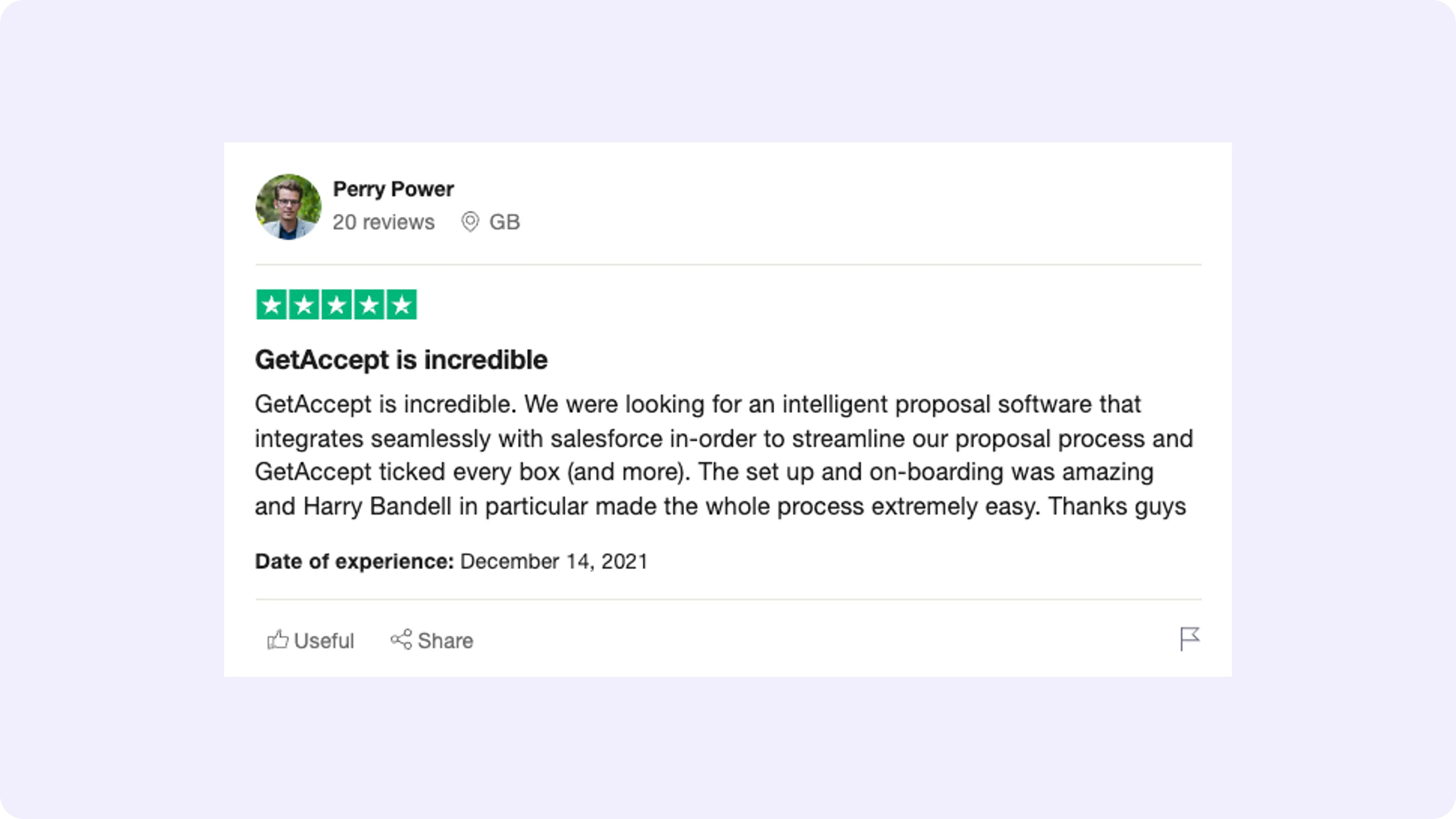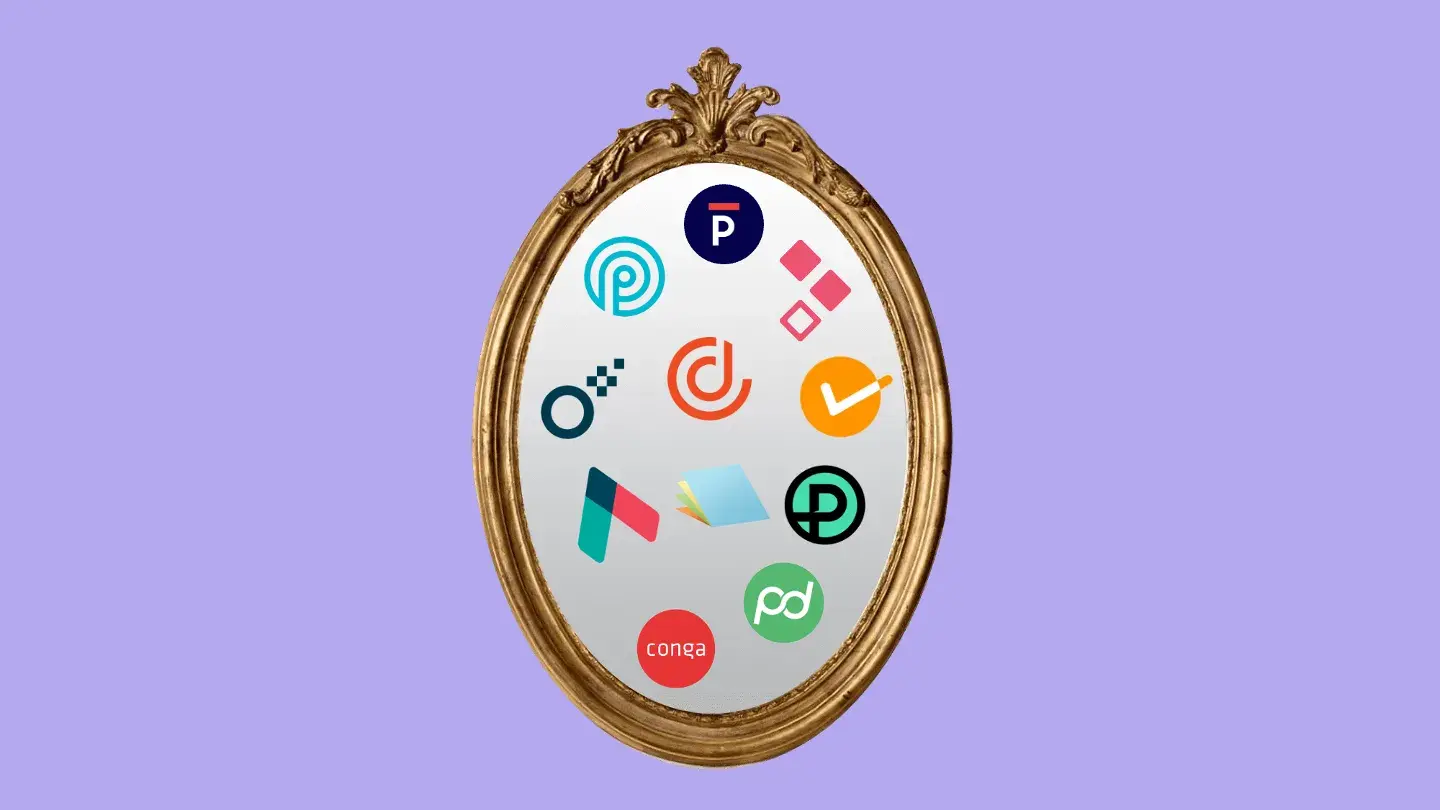A business proposal should do more than inform. It should sell.
It’s more than just a document; it’s your opportunity to showcase value, address your prospect’s needs, and persuade them to take action.
But too often, proposals are generic, overly complex, or fail to connect with decision-makers.
If your proposal doesn’t speak directly to your prospect’s challenges and goals, it won’t stand out in a crowded inbox.
So, how do you write a business proposal that grabs attention and moves deals forward?
In this article, you'll learn how to write a business proposal that is clear, persuasive, and built for impact – helping you win more deals.
What is a business proposal?
A business proposal is a formal sales document that outlines how your product or service can solve a specific problem for a prospect.
It serves as the bridge between interest and action – moving potential clients from considering your offer to making a purchase decision.
Proposals generally fall into two categories:
-
Solicited proposals: Sent when a prospect requests a proposal
-
Unsolicited proposals: Proactively sent to introduce your solution to a potential client.
No matter the type, a strong business proposal should be clear, persuasive, and action-oriented.
How to write a business proposal in 6 steps

1. Research your prospect’s needs & decision-making process
Writing a proposal without fully understanding your prospect’s needs is like shooting arrows in the dark. Sure, you might hit the target, but most of your effort will be wasted.
To create a proposal that resonates, you need deep insight into their challenges, decision-makers, and priorities.
Here’s what you should uncover:
-
What are their pain points? What problems are they facing that your solution can solve?
-
Who are the decision-makers? Will this proposal go to a CEO, a procurement team, or a VP?
-
What matters most to them? Are they focused on cost, ROI, efficiency, or scalability?
Let’s say you’re pitching a sales automation tool to a SaaS company. Instead of just listing features, share how automation reduces manual admin work, frees up 10+ hours per week, and improves team efficiency.
The more specific your proposal is to their needs, the harder it is for them to say no.
2. Craft a compelling executive summary
The executive summary is your prospect’s first impression of your proposal, and in just a few seconds, they’ll decide whether it’s worth reading or ignoring.
If your opening doesn’t immediately grab their attention, you risk losing them before they even reach your key points.
A great executive summary should:
-
Summarize the prospect’s problem
-
Explain why your solution is the best fit
-
Highlight key benefits and expected results
Here’s what we use:
|
“Your sales team is spending hours manually creating and tracking proposals, leading to delays and lost deals. Our proposal software cuts that time in half, giving reps more time to focus on closing.” |
Make it immediately clear why your prospect should keep reading.
3. Outline the scope of work & deliverables
Ambiguity is one of the biggest deal-breakers in business proposals - prospects want a clear understanding of what they’re getting before they commit.
If your proposal is vague or leaves too much room for interpretation, you risk delays, negotiations, or outright rejection.
Key elements to include:
-
Project overview: A brief description of what your solution provides.
-
Deliverables: What the client will receive (e.g., a software license, consulting services, onboarding support).
-
Timeline: When they can expect each milestone to be completed.
if you’re offering sales enablement software, rather than saying “We help teams close deals faster,” you can say this instead:
|
"We provide proposal tracking, automated follow-ups, and real-time engagement insights. Reps can see when prospects open proposals, track which sections they engage with most, and use built-in video messaging to personalize outreach - leading to faster deal closures." |
Clarity eliminates confusion and builds trust.
4. Present pricing & payment terms clearly
Your pricing section is where many deals stall because prospects hesitate when costs are unclear, too high, or not justified.
The key to winning more deals isn’t necessarily lowering your prices - it’s making sure your pricing is easy to understand and demonstrates clear value.
Best practices for pricing:
-
Offer clear package breakdowns (e.g., Basic, Pro, Enterprise)
-
Highlight ROI and cost savings rather than just listing numbers
-
Use interactive pricing tables to let prospects choose the best option
You could use “Our service costs $5,000 per quarter,” but providing a breakdown of what’s included makes it easier to consume:
|
Package |
Features |
Price |
|
Standard |
Basic features + support |
$5,000/qtr |
|
Pro |
Advanced features + training |
$8,500/qtr |
|
Enterprise |
Custom solutions + dedicated manager |
$12,000/qtr |
Make it easy for prospects to understand the value they’re getting.
5. Include social proof & case studies
Even the most persuasive proposal can fall flat if prospects don’t trust that your solution will work for them.
Including case studies, testimonials, and client success stories will give your proposal credibility and show prospects that others have already achieved measurable success with your solution.

What to include:
-
Case studies with measurable results
-
Testimonials from satisfied customers
-
Logos of well-known companies you’ve worked with
For example, instead of just saying “We help companies close deals faster,” include a real success story:
|
"SalesScreen used our sales proposal software and increased their win rate from 13% to 26% within nine months, surpassing their initial goal of reaching 25% within a year. They also experienced a twofold increase in revenue in their enterprise sector over two quarters after transitioning to GetAccept.” |
Read the full case here: How SalesScreen use GetAccept to Increase Win Rate
Nothing builds credibility like real results.
6. End with a strong call-to-action (CTA)
Even the best-written proposal won’t convert if it lacks a clear, actionable next step.
Your CTA should guide your prospect toward a decision, making it as simple as possible for them to move forward. Without a compelling CTA, you risk losing momentum and delaying the deal.
Good CTAs:
-
Make it clear what action to take
-
Provide multiple engagement options
-
Use urgency to encourage a quick response
For example, you can use CTAs such as:
-
“Approve the proposal now and get started in 48 hours.”
-
“Schedule a follow-up call to finalize next steps.”
-
“Customize your package by selecting the best-fit option below.”
And our personal favorite:
-
“Sign the agreement securely with our eSignature tool.”
A strong CTA eliminates friction and moves deals forward.
The do's and don'ts of business proposal writing
Now that you've got your 6 steps to writing a solid business proposal, let's summarise some of the do's and don'ts of the process.
✅ Do’s: Best practices for writing a winning business proposal
📌 Do personalize every proposal: Use dynamic content to tailor proposals to each buyer's needs and industry. (With GetAccept, personalize documents at scale while keeping branding consistent.)
📌 Do make it structured & engaging: Organize content with clear headings, visuals, and interactive elements. (GetAccept’s intuitive proposal editor make it really easy to add on-brand flair to your documents).
📌 Do focus on benefits, not just features: Show how your solution solves their problem with video introductions, case studies, and real-time insights. (Use GetAccept’s video messaging to add a personal touch.)
📌 Do track engagement & follow up smartly: Know when prospects open, read, and engage with proposals. (With GetAccept’s live tracking, sales teams can follow up at the right time.)
📌 Do provide clear pricing & seamless signing: Make it easy for prospects to understand costs and sign the proposal instantly. (Use GetAccept's CPQ complement to add your products and use them in our pricing tables.)
❌ Don’ts: Common mistakes to avoid
🚫 Don’t send static, one-size-fits-all proposals: Avoid generic proposals that don’t address specific pain points.
🚫 Don’t overload prospects with too much information at once: Instead, reveal key details at the right moment. (GetAccept’s 'Show & Hide' feature keeps proposals relevant and digestible.)
🚫 Don’t make follow-ups a guessing game: Not knowing if a prospect read your proposal can slow down deals. (With GetAccept’s engagement tracking, you’ll always know what content your buyer is looking at and when.)
🚫 Don’t let deals stall due to signing delays: Remove friction by offering built-in electronic signatures for immediate approval.
🚫 Don’t forget to make proposals interactive: Static PDFs can feel outdated and impersonal. (With GetAccept, use embedded videos, chat, and interactive pricing to make proposals more engaging.)
Conclusion
A well-crafted business proposal sets you apart, communicates value, and accelerates the sales process.
By structuring your proposal effectively, you can clearly demonstrate how your solution solves your prospect’s challenges, address key concerns, and make it easy for them to move forward with confidence.
The right approach ensures your proposal isn’t just read - it influences decisions.
Now, it’s time to put these strategies into practice and write a business proposal that helps you close more deals.
Write a business proposal with GetAcceptWriting a business proposal is just one part of the proposal management process.
To keep deals moving, you need to know when prospects engage, what they focus on, and when to follow up. How can you ensure your proposals don’t just get sent - but actually gain traction?
With real-time insights and seamless follow-ups, GetAccept helps you turn proposals into signed agreements. |
GetAccept is built to help you create business proposals that win



